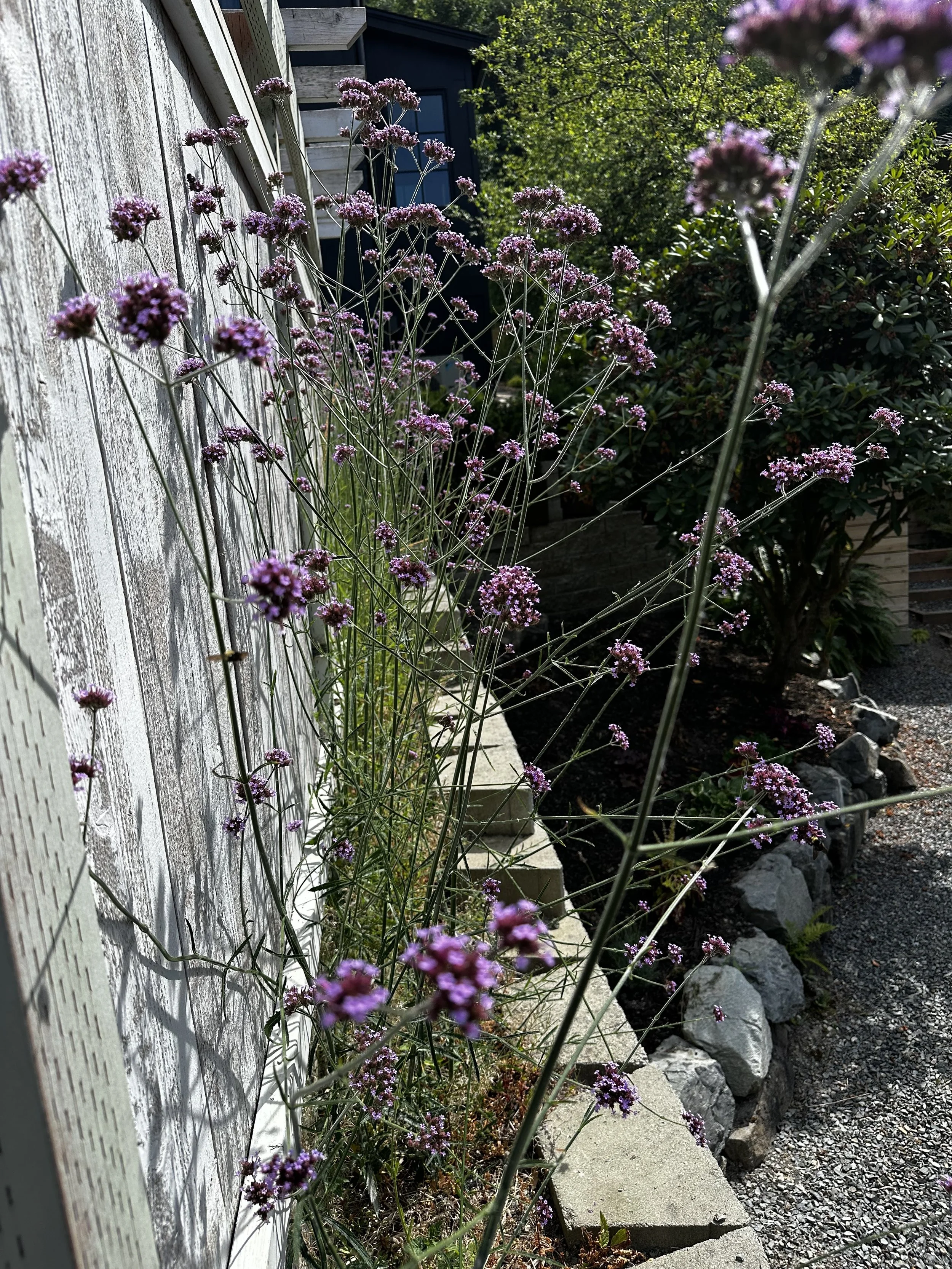The 10 Longest Bloomers of Summer — And Why I Always Plant Them
One of the secrets to a thriving, colorful summer garden is choosing plants that don’t just show up for a few weeks — but keep blooming for months. As a garden designer, I’m constantly testing which perennials really go the distance, especially in the Pacific Northwest climate. Here are my top 10 longest-blooming summer performers and why they’ve earned a permanent spot in my designs.
1. Joe Pye Weed (Eutrochium purpureum)
Bloom time: Mid-summer through fall
Why I plant it: This towering native perennial brings serious drama to the garden. Its large mauve flower heads are pollinator magnets, especially for butterflies and bees. But what I love most? It keeps blooming well into September and even October in mild years — all while adding height and texture. It’s drought-tolerant once established and thrives in full sun to part shade.
2. Agastache ‘Blue Fortune’
Bloom time: Early summer to frost
Why I plant it: This is my go-to for soft spikes of lavender-blue flowers that bloom nonstop for months. The licorice-scented foliage deters deer, and the nectar-rich blooms feed bees and hummingbirds daily. It pairs beautifully with ornamental grasses and other upright perennials. Even when neglected, it keeps going.
3. Helenium (Sneezeweed)
Bloom time: Late summer to early fall
Why I plant it: If you need a shot of hot color in late summer, this is it. Helenium’s daisy-like blooms come in rich shades of red, orange, and yellow. It blooms for weeks, thrives in full sun, and adds vertical energy to the border. I love how it holds its shape and never flops — especially when mixed with sturdy companions like Russian sage or allium.
4. Verbena bonariensis
Bloom time: Mid-summer to frost
Why I plant it: This airy, self-seeding perennial is like confetti for your garden. The tall, wiry stems support small purple blooms that hover above the border like butterflies. It’s a favorite of pollinators and adds a sense of movement and grace. I let it weave itself through the garden — it looks effortless and spontaneous.
5. Achillea ‘Parker’s Variety’
Bloom time: Early summer to early fall (with deadheading)
Why I plant it: This tall, bright yellow yarrow is tough, drought-tolerant, and incredibly long-blooming. It holds its color well even in dry heat and reblooms when cut back. I use it in naturalistic designs where long-term structure and reliable bloom are key.
6. Summer Allium Beauty
Bloom time: Midsummer into fall
Why I plant it: Unlike the spring-blooming ornamental alliums, Summer Allium hits its peak in July and lasts into September. It forms tidy clumps of grassy foliage topped with purple globe flowers that bees love. The blooms stay looking fresh longer than most summer perennials — and they don’t need staking.
7. Gaura ‘Whirling White Butterflies’
Bloom time: Early summer to frost
Why I plant it: Gaura is a fountain of fluttering white (or pink) blooms that dance in the breeze. It’s practically always in bloom and brings a wild, romantic quality to garden beds. I use it to soften edges and fill gaps — and I love how it catches the light. In mild winters, it can even reseed or return with vigor.
8. Calamintha nepeta (Lesser Calamint)
Bloom time: Midsummer to frost
Why I plant it: This low, bushy perennial is an underused gem. Tiny white to pale blue flowers cover the plant from July through frost — and the buzz of bees around it never stops. It’s tidy, compact, drought-tolerant, and smells minty fresh. I use it in front of borders, in containers, or anywhere that needs a reliable, glowing filler.
9. Echinops ritro (Globe Thistle)
Bloom time: Midsummer through fall
Why I plant it: The steel-blue globe flowers of Echinops are architectural and long-lasting. They hold up well as cut flowers and dry beautifully for winter arrangements. I love pairing them with pinks, purples, and rust tones for contrast. Plus, they’re unbothered by pests, deer, or drought.
10. Perovskia atriplicifolia (Russian Sage)
Bloom time: Summer to fall
Why I plant it: Airy and lavender-hued, Russian sage is a backbone bloomer. It fills the space with a soft purple haze for months and adds a silvery glow to the garden. It thrives in poor soil, hot sun, and dry conditions — and bees absolutely swarm it. Just give it room to sprawl and enjoy the show.
Tips to Keep These Blooming Even Longer:
Deadhead strategically — especially Achillea, Agastache, Helenium, and Gaura.
Use the Chelsea Chop (cutting back in late May) on certain perennials to delay bloom and extend flowering over a longer period.
Plant in full sun and well-drained soil to reduce stress and encourage consistent blooming.
Pair with grasses to add movement and contrast during off-bloom phases.
🌿 Want a garden that looks amazing from July to October?
Start with these 10, and you’ll have color, texture, and pollinators all season long.
Joe Pyweed
Agastache Blue Fortune
Helenium (Sneezeweed) Scarlet Skies
Verbena
Achillea Parker’s Variety
Summer Allium Beauty
Calamintha Nepeta
Echinops ‘Globe Thistle’
Little Spire formerly ‘Russian Sage’








